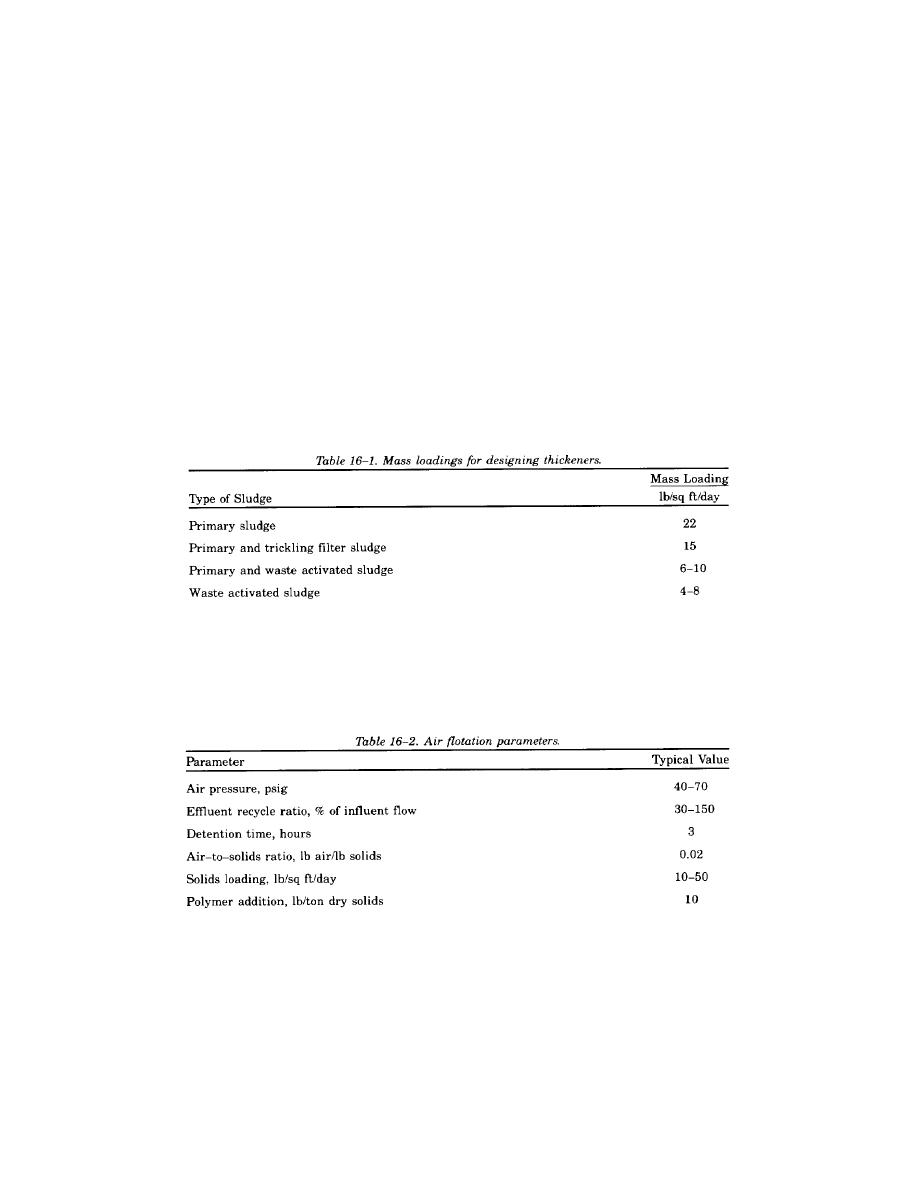
TM 5-814-3/AFM 88-11, Volume III
c. Controls. The pumping of sludges often requires operation at less than the required design capacity
of the pump. For small treatment plants, the design engineer will evaluate the use of a timer to allow the
operator to program the pump for on-off operation. For large treatment plants, the use of variable speed
controls should be investigated.
16-3. Sludge thickening.
Thickening is provided to reduce the volume of sludge. Two basic types of thickeners work by gravity or
flotation and use either continuous or batch processes. Gravity thickeners are essentially settling tanks with
or without mechanical thickening devices (picket fence type). Plain settling tanks can produce solids contents
in sludges of up to 8.0 percent for primary sludges and up to 2.2 percent for activated sludge. Activated
sludge can also be concentrated by resettling in primary settling tanks.
a. Gravity thickeners. A gravity thickener will be designed on the basis of hydraulic surface loading and
solids loading. The design principles are to be the same as those for sedimentation tanks, as discussed in
chapter 11. Bulky sludges with a high Sludge Volume Index (SVI) require lower loading rates. The use of
chemical additives (lime or polyelectrolytes) also allows higher loading rates. The minimum detention time
and the sludge volume divided by sludge removed per day (which represents the time sludge is held in the
sludge blanket) is usually less than two days. Table 16-1 gives mass loadings to be used for designing gravity
thickeners.
b. Flotation thickening. Flotation thickening causes sludge solids to rise to the surface where they are
collected. This is accomplished by using a dissolved air flotation process. The process is best suited to
activated sludge treatment where solids contents of 4 percent or higher are obtained. Table 16-2 provides
design values for flotation thickening. This process will generally not be applicable in the size of plants used
by the military because of the increased operator attention which it requires. Therefore, this process will not
be used at military installations without demonstrated economic advantage with life cycle costs.
16-4. Sludge conditioning.
a. Chemical conditioning. Chemical additives may be used to improve sludge dewaterability by acting
as coagulants. Chemicals commonly used for this are ferric chloride (FeCl3), lime (CaO), and organic
polymers. The application of chemical conditioning is very dependent on sludge characteristics and operating
parameters; therefore, a treatability study will be used to determine specific design factors such as chemical
dosages. Nevertheless, table 16-3 provides a range of dosages which are typical for various sludge types.
16-3


 Previous Page
Previous Page
